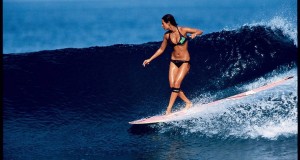
A type of aquatic ecosystem is one in which the water is mostly salt water instead of fresh water. There are other types including rivers, fresh water lakes, and estuaries. An aquatic ecosystem is made up of all the live plants and animals and all the land in the area. The topography can consist of coral reefs, tidal zones, estuaries, river mouths, and salt water reefs. Any plant or animal life in salt water will have adapted to it’s environment. The tropical ecosystem and the river and estuaries actually have a lot in common. In all of them, plants and animals have a symbiotic relationship that allows them to survive and keeps the system healthy.
Experts who have studied have found that the food chain is determined by the predators. The top of the food chain in any are the biggest and strongest mammals and fish and the bottom of the food chain is the coral and other tiny life forms. Animals like seals, dolphins, and whales are often part of a salt water system. The tiny fish and the crustaceans are near the very bottom of the food chain. These tiny life forms are actually a very necessary part of the system. In fact, they are vital. The tiniest plants and the plankton are necessary so the larger animals can survive. It also needs the tides, currents, and sand bars and rock reefs in order to be healthy. The animals that interact with it like jelly fish, rays and eels are also part of the delicate balance.
It may not be easy to see at first how humans have affected the aquatic ecosystem but much research has been done on this subject and we know how we affect it. Everything we do from fishing to fertilizing crops and fields can have an effect in some way. Other things that can affect include toxins that get released into the water and washed in with the tides, plastics and other waste that ends up in the water, and fuel and oil spills from ships on the ocean. These all have a very negative effect on the delicate balance.
In order for the thousands of aquatic species to survive, it’s crucial that we take care of it, regardless of where those are located – in the tropical waters, or in the Antarctic and Arctic oceans. No one is self-contained; every one in the world is affected by anything that happens in other aquatic ecosystems.

Source by Philip Badeau
 Vitamin Agent The Health & Naturalistic Source
Vitamin Agent The Health & Naturalistic Source


